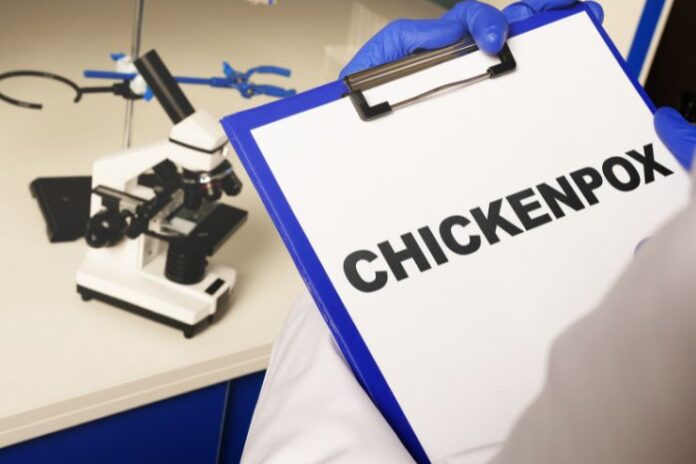Affiliate Disclaimer
Some links in this article are affiliate links. We may earn a small commission if you make a purchase through these links, at no extra cost to you. We only recommend products we find useful to our readersThe Varicella-zoster virus (VZV) causes chickenpox, a hazardous illness. Although it can happen at any age, it mainly affects youngsters. The virus can be spread through direct contact, airborne droplets, or contact with contaminated surfaces. Despite being relatively mild, chickenpox can cause severe discomfort and consequences in certain situations, particularly in adults and those with compromised immune systems.
Itchy red patches characterize chickenpox, turning into fluid-filled blisters that eventually crust over. Other symptoms include fever, exhaustion, body aches, and appetite loss. Before spreading to different body parts, the rash usually starts on the face, chest, and back. Even though the condition usually goes away in 7 to 10 days, symptom management is crucial because of the severe itching and the potential for scarring.
Home remedies can greatly decrease itching, ease discomfort, and accelerate healing. Additionally, natural remedies strengthen immunity, making it easier for the body to avoid illness. Furthermore, appropriate treatment minimizes excessive scratching, lowering the chance of chronic scarring and secondary infections.
Read More: 17 Effective Home Remedies For Keloids For Faster Recovery
Causes of Chicken Pox
The varicella-zoster virus causes chickenpox and belongs to the herpes virus family. The same virus causes adult shingles.
Chickenpox can be easily transmitted to others for one to two days before blisters form and until all blisters have crusted over. You might contract chickenpox:
- From coming into contact with chickenpox blister fluids.
- If someone close to you sneezes or coughs with the illness.
Although there is a chance of catastrophic complications, the condition is usually minor. Generally speaking, older children and adults get sicker than younger ones.
The likelihood of a child contracting chickenpox before one year is low if their mother has had the illness or has received the vaccination. When they do have chickenpox, it’s usually moderate. It is because antibodies protect them from their mother’s blood.
Signs And Symptoms Of Chickenpox
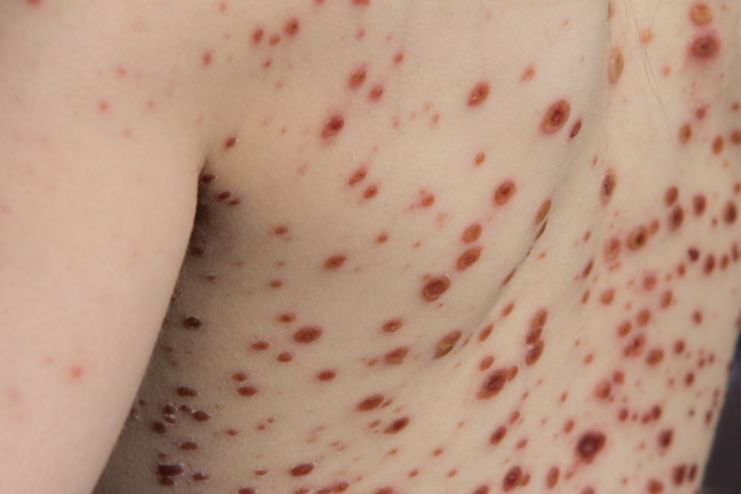
Now that we have a basic idea of what this disease entails, we must understand the symptoms and their details so it’s easier to detect the condition at a prior stage.
Before the rash:
- A constant feeling of not feeling well and good
- A spiked fever in the body
- Loss of appetite
- Muscle and joint pains
- Nausea and dizziness in some cases
After the rash:
- It starts with the appearance of rashes from mild to severe on the body
- Appearance of spots on the whole body after it begins from the face
- Development of blisters on top of the spots, which can not just be painful but itchy as well
- After the drying out of the blisters, a thin layer of dead skin, also known as a crust, develops over the place of the blister.
- The crusts fall off gradually once the healing kicks in
Read More: 18 Benefits of Aloe Vera for Skin and Hair
Stages of Chickenpox
Stage 1: Bumps and Spots
The initial symptom of chickenpox is the onset of little red dots on the face, chest, and back that progressively spread across the body. Fever, exhaustion, headaches, and appetite loss may accompany these patches.
Stage 2: Blisters
Little blisters are a sign of the subsequent stage of chickenpox. Vesicles filled with clear fluid typically fill these blisters, but occasionally, pustules containing hazy or yellow fluid may also form. Blisters frequently become enveloped in red or violet skin.
Stage 3: Scabs and Crusts
The blisters dry out and develop scabs within a week or two, eventually coming off. People must avoid scratching to prevent subsequent infections and scars.
Every stage can benefit from proper care, which can lessen complications, hasten recovery, and ease symptoms.
Home Remedies For Chickenpox
When it comes to the treatment for chickenpox, while many prefer modern medicine for faster recovery, many tend to stick to traditional remedies for the condition.
They effectively heal the condition and ensure the spots are obliterated for effective recovery.
Here, we will be sharing some of the effective remedies to cure chickenpox naturally.
1. Use Calamine Lotion
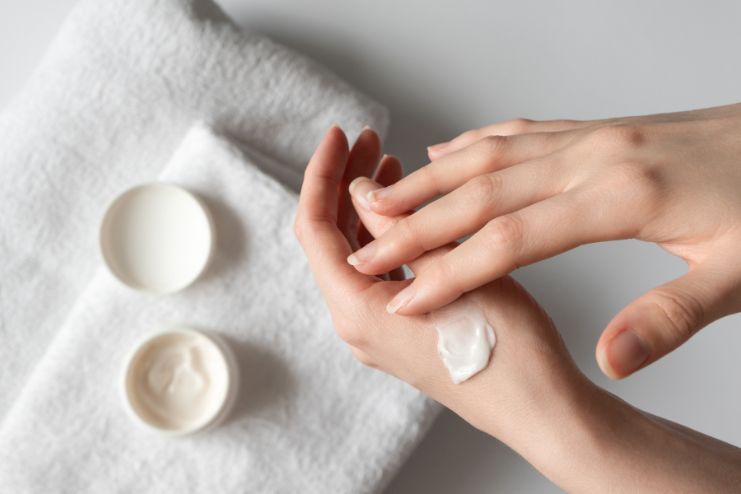
Applying calamine lotion might lessen the irritation. Zinc oxide is one of the skin-soothing ingredients in this lotion.
Use a clean finger or a cotton swab to apply calamine lotion to irritated skin areas. Remember to avoid applying calamine lotion to or around chickenpox near the eyes.
2. Comforting Baths

Bathing in cool water with baking soda, ground or rolled oats, or a store-bought oatmeal bath solution can reduce chickenpox itching.
For the first few days of chickenpox symptoms, applying moist compresses or taking cool baths every three to four hours may be the most efficient way to reduce itching.
Read More: DIY Herbal First Aid Kit: 7 Home Remedies for Common Ailments
3. Honey, Baking Soda, and Aloe Vera
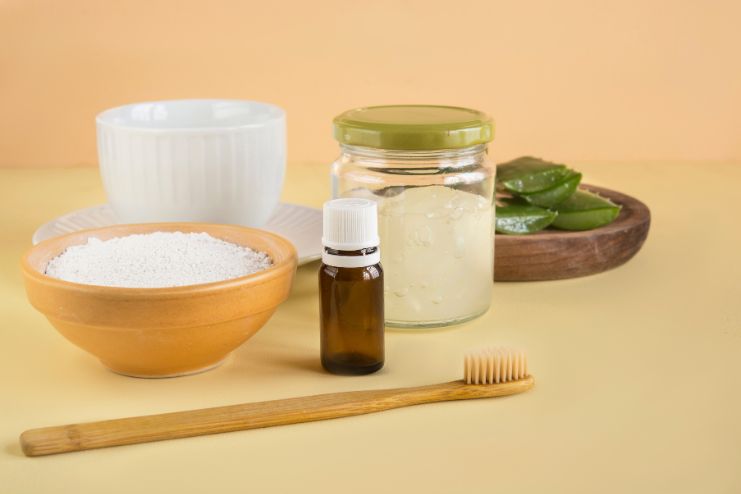
Baking soda, honey, and aloe vera are powerful natural remedies for soothing chickenpox symptoms. Aloe vera, a green marvel, works like magic for your skin by providing deep hydration, reducing itching, and accelerating healing. Its cooling and anti-inflammatory properties help calm irritated skin, preventing excessive scratching and potential scarring.
Apply the plant’s gel on the blisters to provide some organic moisture. If you want to get fancy, baking soda or sodium bicarbonate comes next.
It is your go-to assassin for itching. When combined with honey, nature’s pleasant nectar can relieve itching and tickling.
4. Essential Oils and Neem
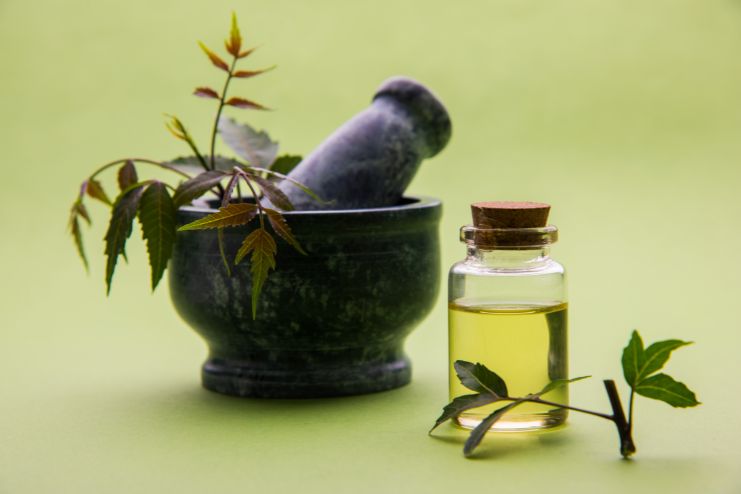
Use neem, also called Azadirachta Indica, to protect your skin when chickenpox turns it into a battlefield. Use its oil or grind the leaves into a paste. The plant’s antibacterial qualities will greatly benefit your skin.
Remember to include essential oils such as chamomile, lavender, and tea tree. These aromatic warriors can relieve persistent itching and calm irritated skin.
5. Make Use of Chamomile Compresses
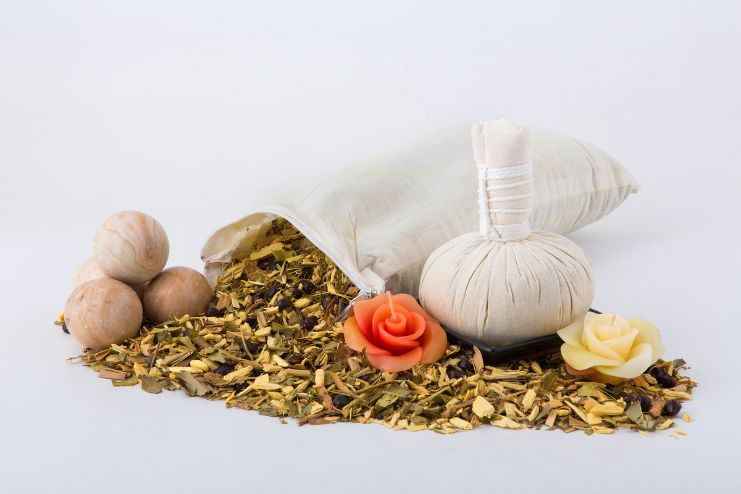
Your kitchen cabinet’s chamomile tea may also help relieve itching chickenpox spots. When administered topically, chamomile contains antibacterial and anti-inflammatory properties.
Put two or three chamomile tea bags in a warm bath or cool them after brewing. After that, apply the tea-soaked soft cotton pads or washcloths to the skin’s sensitive spots. Gently massage the skin dry after using the compresses.
Read More: Home Remedies Handbook: DIY Healing for Everyday Family Ailments
6. Soft, Cold, and Bland Foods

Mouth sores from chickenpox can be very unpleasant and interfere with eating and drinking.
Foods that are easy to chew and swallow, don’t irritate the mouth, and aren’t overly hot can help reduce discomfort. That includes avoiding meals that are acidic, salty, and spicy.
7. Put on Mittens to Avoid Scratching

Although it might be tempting to scratch your blisters, it can exacerbate your pain and leave your skin vulnerable to infection.
Cover your child’s hands with gloves or soft socks to keep them from scratching at night or during naps. Trimming your child’s fingernails can also be beneficial to prevent harm to the afflicted areas.
8. Distraction

In many situations, only distracting oneself from the itching may be sufficient to prevent the need to scratch, even though this is not a cure. Reading, playing games, or watching interesting movies are excellent diversion options, especially for kids.
9. Vitamin E Oil
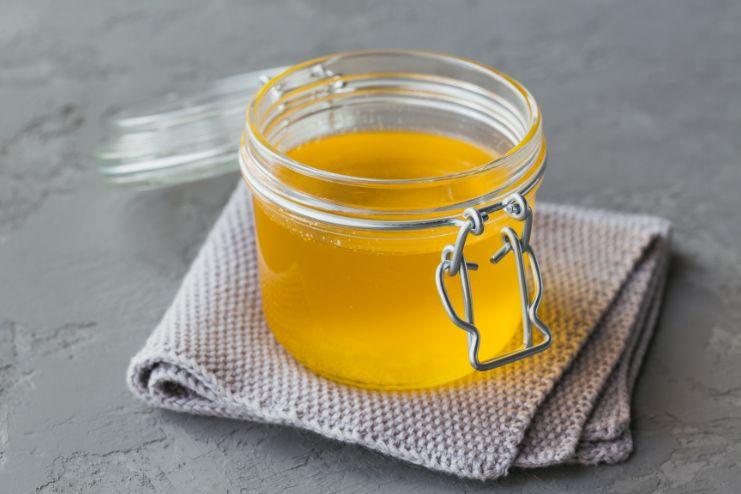
Vitamin E oil is a potent antioxidant that helps cure chickenpox scars by reducing inflammation and encouraging skin renewal. A tiny amount applied directly to the blisters reduces discoloration, speeds up cell healing, and hydrates the skin. After recuperation, regular use can help restore skin texture and avoid permanent scarring.
Read More: 15 Effective Home Remedies For Underarm Odour That Work
10. Apple Cider Vinegar

Apple cider vinegar (ACV) is a popular natural antiseptic that helps dry out chickenpox blisters, lessen itching, and stop infections. Its antiviral and antibacterial qualities promote quicker recovery by keeping the skin clean.
To relieve pain and encourage healing, gently dab the affected regions with a cotton ball soaked in a solution of one part ACV and two parts water.
11. Antihistamines
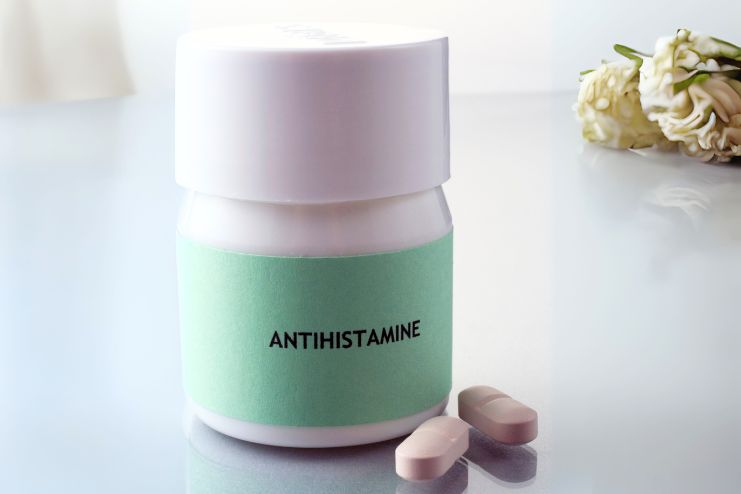
Diphenhydramine (Benadryl) is one of these medications that may be useful when other methods of treating itching are insufficient. Before giving your child an antihistamine, see your doctor and ensure you don’t take more than the prescribed amount.
12. Pain Reduction

Tylenol, known as acetaminophen, can treat low fevers and ease discomfort. It is the sole medication typically advised for treating chickenpox.
Avoiding aspirin when you have chickenpox is crucial. By doing this, you run the risk of developing Reye’s syndrome, a dangerous illness that damages both your liver and your brain. In youngsters, Reye’s syndrome can be fatal.
13. Cool Compress
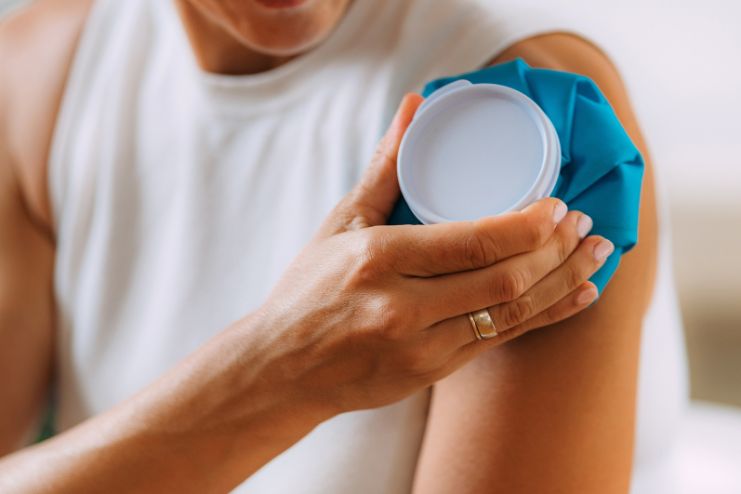
Applying a calm, moist cloth to uncomfortable or itchy regions relieves irritation, reduces inflammation, and provides immediate comfort. The cool temperature numbs the skin, reducing the desire to scratch and stopping further inflammation.
Just soak a gentle cloth in cold water, squeeze out any extra moisture, and apply it to the affected areas for a few minutes to an hour, depending on the situation.
Read More: 12 Home Remedies For Carpal Tunnel – Get Rid Of The Numbness!
Diet for chickenpox
When battling chicken pox, it’s essential to concentrate on meals that promote healing and strengthen the immune system. A well-balanced diet or nutritious chickenpox food can boost the body’s defenses against the virus and facilitate a quicker recovery. Some examples of meals to eat when you have chicken pox include the following:
- A chickenpox diet must include organic fruits and vegetables. Vitamin C-rich citrus fruits support a stronger immune system. Grapefruits, oranges, and lemons are all great options. Fruits high in nutrients, such as papaya, mangoes, and guava, offer vitamins A, C, and K, potassium, and folate.
- Iron and calcium are essential vitamins and minerals found in leafy green vegetables like spinach, carrots, bell peppers, and broccoli. They aid in the body’s healing process.
- Protein aids in the reconstruction and repair of virus-affected tissues. Eating enough foods high in protein can hasten healing and reduce problems. Tofu, poached fish, and boiled chicken are soft proteins that are simple to consume and digest. Plant-based protein sources such as beans and different kind of lentils are also excellent.
- Healthy fats are very crucial for reducing inflammation and bolstering the immune system. To reap the benefit of the vital nutrients, add almonds, walnuts, flaxseeds, chia seeds, and olive oil to your diet.
How Does Chickenpox Spread?
When someone with chickenpox coughs or sneezes, the disease can spread quickly through the air or by contact with chickenpox blisters. The virus does not survive very long on surfaces.
Although it can vary from 10 to 21 days, the average time between exposure to the chickenpox virus and potentially developing symptoms is around two weeks.
Additionally, people can contract chickenpox by coming into contact with someone with a shingles (zoster) outbreak.
Many people have this lingering question in their minds whether or not chickenpox can happen twice, and it actually can. The possibilities are low, but if you have a weakened immune system, chances are that it could return and infect your body again.
Read More: 14 Home Remedies For Dysentery For Faster Recovery
How To Prevent Chickenpox?
When discussing chickenpox, experts always suggest that prevention is better than cure.
The best way to prevent this disease from infesting your body is by ensuring that you get the chickenpox vaccination in childhood. Getting vaccinated as soon as possible is critical to avoid unneeded incidents.
In general, it is also best to avoid people who are affected by the disease. Avoid possible sources of infection and always wash your hands before consuming food.
The list of home remedies for chickenpox is quite extensive. If you are wondering what one can do to keep this in check, it is always best to prevent the condition in the first place. Experts also suggest consulting medical professionals if the situation worsens.
Conclusion
Although chickenpox is an inevitable part of life, how you handle it matters greatly. Without harsh chemicals, home treatments offer a gentle yet efficient way to reduce irritation, hasten healing, and avoid scarring. Easy fixes can help the body’s natural healing process and turn agony into relief.
The key is patience. Although the blisters may appear to last forever, chickenpox eventually goes away. To avoid infections or scarring, one should stay comfortable, reduce irritation, and avoid scratching. Immune-boosting foods, rest, and hydration further enhance the healing process.
However, medical care is required if symptoms worsen, such as a high fever that doesn’t go away, trouble breathing, or infected blisters. Even while home treatments are effective, always pay attention to your body and get help from a professional when necessary.
-
Oct 2019Written by Somapika D
-
Apr 2025Edited by Ankita
References
- https://www.cdc.gov/chickenpox/about/index.html
- https://www.mayoclinic.org/diseases-conditions/chickenpox/symptoms-causes/syc-20351282
- https://www.pennmedicine.org/for-patients-and-visitors/patient-information/conditions-treated-a-to-z/chickenpox
- https://my.clevelandclinic.org/health/diseases/4017-chickenpox
- https://www.mayoclinic.org/diseases-conditions/chickenpox/symptoms-causes/syc-20351282
- https://www.pennmedicine.org/for-patients-and-visitors/patient-information/conditions-treated-a-to-z/chickenpox
- https://my.clevelandclinic.org/health/diseases/4017-chickenpox
- https://kidshealth.org/en/parents/chicken-pox.html
- https://www.goodrx.com/conditions/chickenpox/what-chickenpox-look-like
- https://www.medicalnewstoday.com/articles/239450#transmission
- https://www.healthline.com/health/home-remedies-for-chickenpox#mittens
- https://www.medicalnewstoday.com/articles/326051#home-remedies
- https://www.everydayhealth.com/chickenpox/treatment-home-remedies/
- https://www.healthline.com/nutrition/chicken-pox-diet#foods-to-eat
- https://www.tataaig.com/knowledge-center/health-insurance/diet-for-chicken-pox
- https://www.health.state.mn.us/diseases/varicella/chknpxfacts.html
- https://kidshealth.org/en/parents/chickenpox-sheet.html
- https://my.clevelandclinic.org/health/diseases/4017-chickenpox
In this Article














